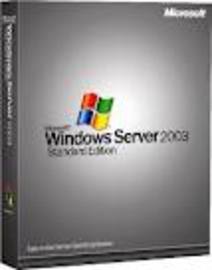Introduction

Windows server is one of the most famous operating systems used in server computers. Some of the tips regarding windows server are given below:
Step 1
1. When using a Microsoft Windows Server edition, always remember to keep applications and policies as simple as possible. Often, running too much unreliable code can cause the system to face errors and occasional sudden shutdowns. Even running more codes means integrating more bugs into the system thus, posing a threat to security.
2. Try to use only the applications needed. Probably, when a Microsoft Windows Server is being used, multiple terminals are being connected to it. So, try to install the other apps individually to the terminals as and when needed. Installing too many applications can slow your server down. This will in turn, affect the speed of the associated terminals.
3. Use as many normal user accounts as you can. Implementing too many administrative or super users in Microsoft Windows Server can decrease the system security. Grant average privileges to the normal users, so that administrator accounts can be used as and when needed.
Step 2
4. There must be more than one administrator account for a Microsoft Windows Server based computer. This is done in case, if any account is not accessible and it is an emergency, the other account can be used in order to fix this issue. It also allows you to control the server by multiple experts.
5. Audit logging is an essential part of any server based operating system and hence, with Microsoft Windows Server too. Audit logging will enable you to use the server in much more controlled and administrative way as and when needed. Frequent scheduling of audit logging is even necessary for proper security and safety for the server. Events created by the run applications can be properly analyzed using this technique.
Step 3
6. Using local security policies in Microsoft Windows Server is advised. This increases the security of the system by granting privileges not only to the users but also to the applications. It helps in keeping the operating system environment isolated from the application environment thus, ensuring true and effective safety. Local security policies should only be accessible from administrator accounts to increase the safety level even more.
7. Have a regular review of the firewall policies of the Microsoft Windows Server. This will help in determining the safety of the server even in the scenario where the server is connected directly with the internet connection. Firewall policies can even control both outbound and inbound attacks, if properly managed.
Tips
8. Try to keep the system services of the server as much isolated as possible from the services of the application environment in a Microsoft Windows Server. This ensures safety from crashing and server errors.
9. Update the Microsoft Windows Server operating system with the new hotfixes and security patches over the internet to ensure updating and safety.
additional tip
10. Security Configuration wizard and XML based security policies are supposed to be implemented in Microsoft Windows Server, in order to secure the operating environment. These files are generally saved within the servers as .INF files and can be edited later when needed.